
RV Winter Survival Guide
RV Winter Survival Guide
By: Peter & Kathy Holcombe
When we transitioned from tent camping to living in the RV, one of the most noteworthy and gratifying differences occurred when the mercury dropped below the freezing mark. After a long day skiing or ice climbing in arctic conditions, we would head back to our beloved Winnie the View, hang up our soggy layers and crank up the heater. Gone are the evenings in the tent, nestled deep in our sleeping bags, convulsively shivering, waiting for daylight and hoping our damp gear wasn't frozen solid the next morning. Now, our winter evenings are spent lounging around the dinette playing cards and swapping epic tales of adventures past.
With careful planning and a few preventative modifications, winter camping is an RVers delight. Here are some of the strategies that we have used over the years to successfully weather sub-zero temperatures (yes, -22F to be exact!).
(Editor's note: These instructions and tips are suggestions from an owner of a Winnebago product and trusted GoLife contributor, not a professional or Winnebago Industries employee. Please keep in mind that some RVs handle colder temperatures better than others and if you decide to go winter camping in your RV, it will be done at your own risk.)
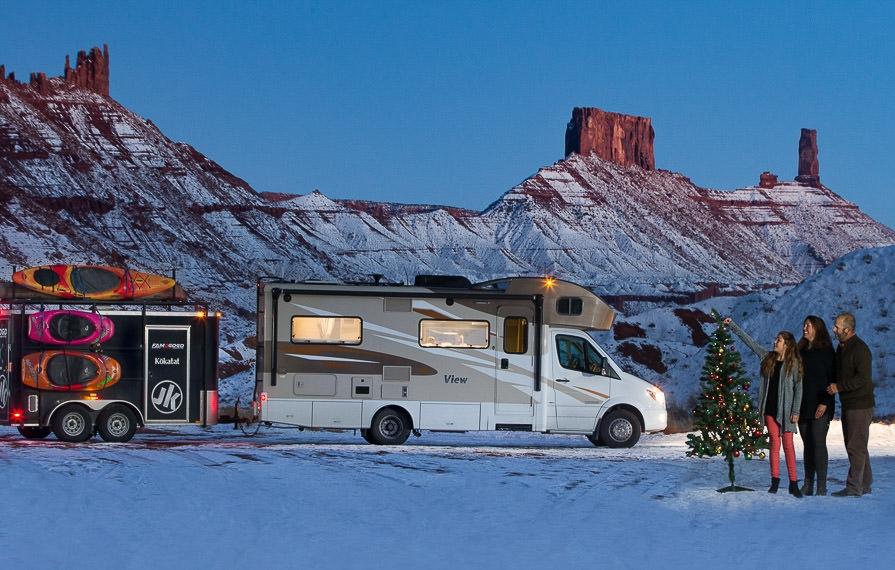
As a family, we revel in finding out-of-the-way places that we can call home for the night. Even with temps in the high teens, Castle Valley, UT, was the perfect backdrop for a little holiday cheer.
1. Water Management
The safest bet is to drain your tanks and winterize your plumbing using an RV water system antifreeze. If you opt for this strategy, be sure to bring containers of fresh drinking water and plan on using public restrooms. However, in our opinion, one of the greatest features of an RV is the indoor plumbing (particularly in the winter), so this is absolutely a last resort for us.
This is also one of the primary reasons we purchased a Winnebago View - all of the pipes are strategically concealed in the living area, so that as long as the cabin is heated, the pipes won't freeze. The two exceptions to this are the hot water heater (which needs an external vent) and of course, the waste tank drain valves. (Please note that all RVs do not have internal water lines).
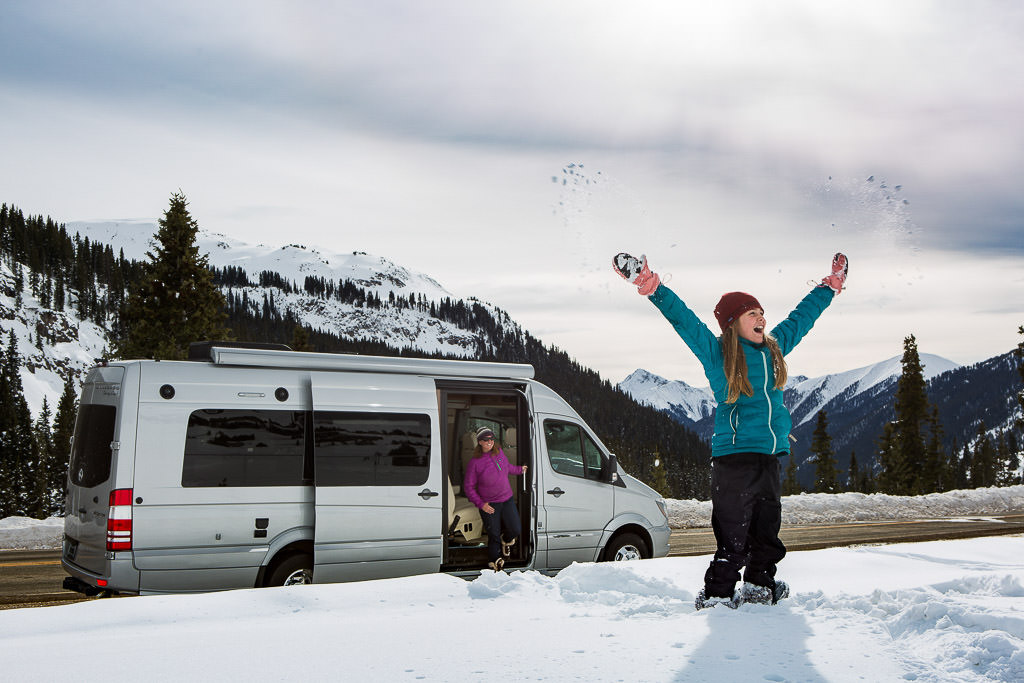
We run our hot water heater constantly in cold temperatures to prevent it from freezing and possibly cracking, and only dump our holding tanks on days where the temperatures are above freezing to avoid the dreaded and disastrous "poopcicle" - yes, we learned that the hard way!
Call us crazy, but New Year's Day is the first day of our kayaking season, and Glenwood Springs, CO, is our favorite NYD destination. Yes, we have been know to drive all the way from the tropical waters of Florida for this uniquely Colorado celebration. We have weathered temps from the single digits all the way up to a balmy 40 degrees over the past four years, but our Winnie the View has kept us warm and our gear dry through it all.
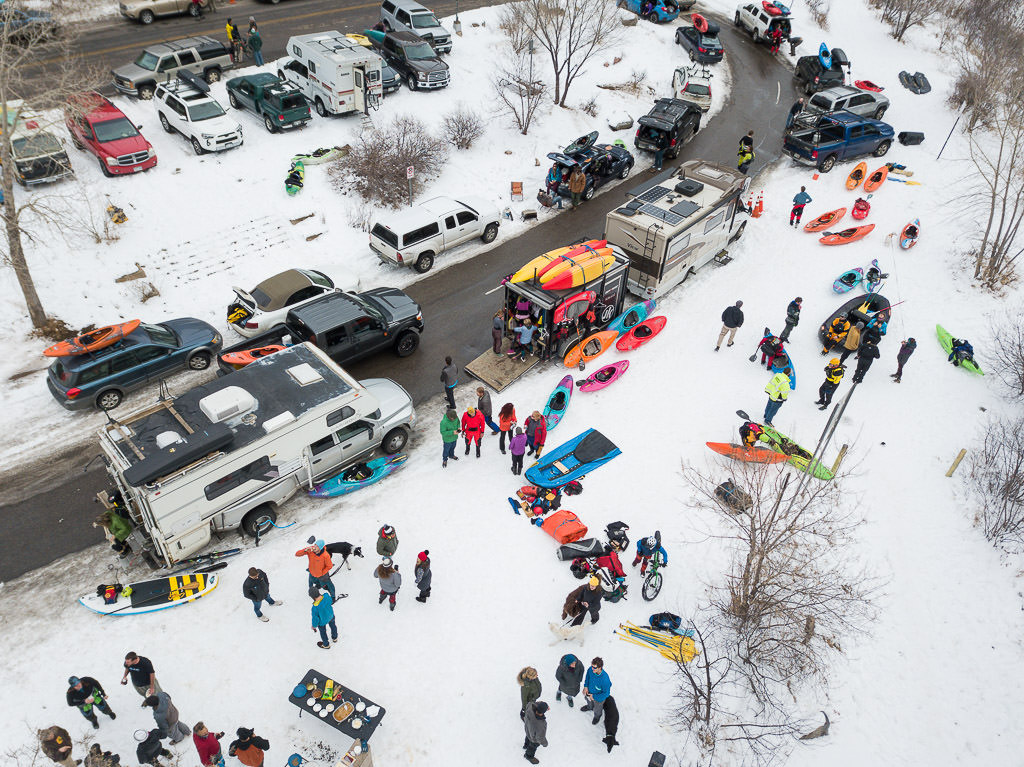
2. Temperature Management
When headed into the deep freeze, it is critical to maintain a heated cabin environment, not only for personal comfort, but also to protect your RV from damage. Propane is the main source of heat for our RV, so keeping the tank levels topped off is critical. But equally important, is electrical energy to power the furnace fan. If possible, we try to find shore power to alleviate the constant drain on our house batteries. When we are plugged in, we use two small ceramic heaters as a secondary source of heat in extreme conditions.
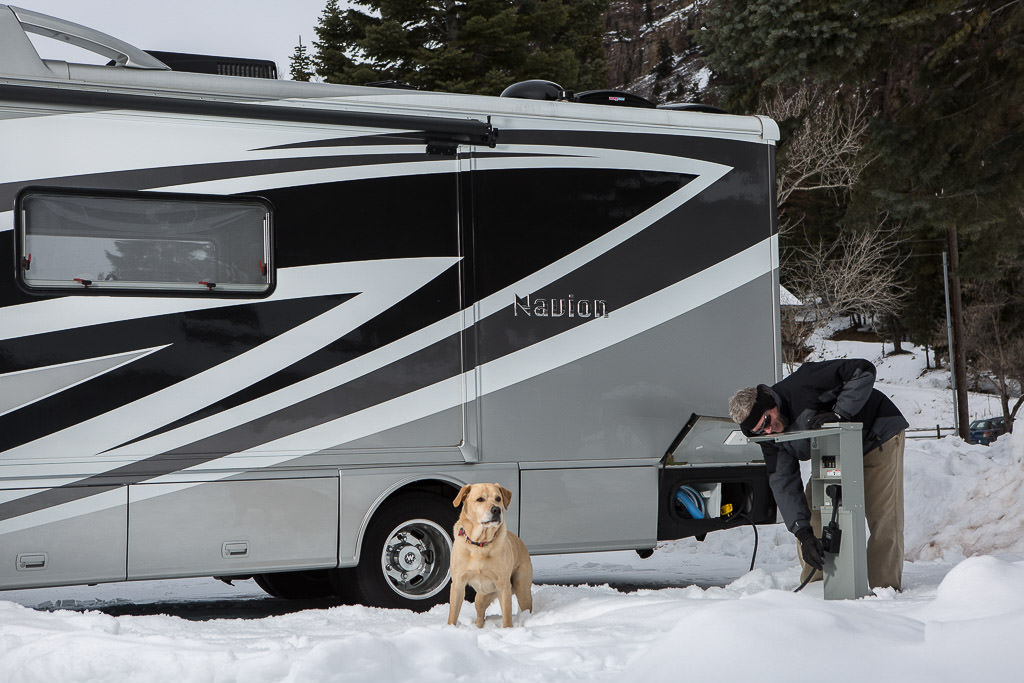
When we are boondocking, we keep careful watch on our house battery levels and often run the generator for a few hours before bed to top off our power levels, so that we can make it through the night without over-taxing and damaging our house batteries. In extreme conditions, we run the generator all night.
When the mercury drops into the single digits, our first choice is to find shore power. If that is not an option, we crank up the generator and let its purr lull us into dreamland.
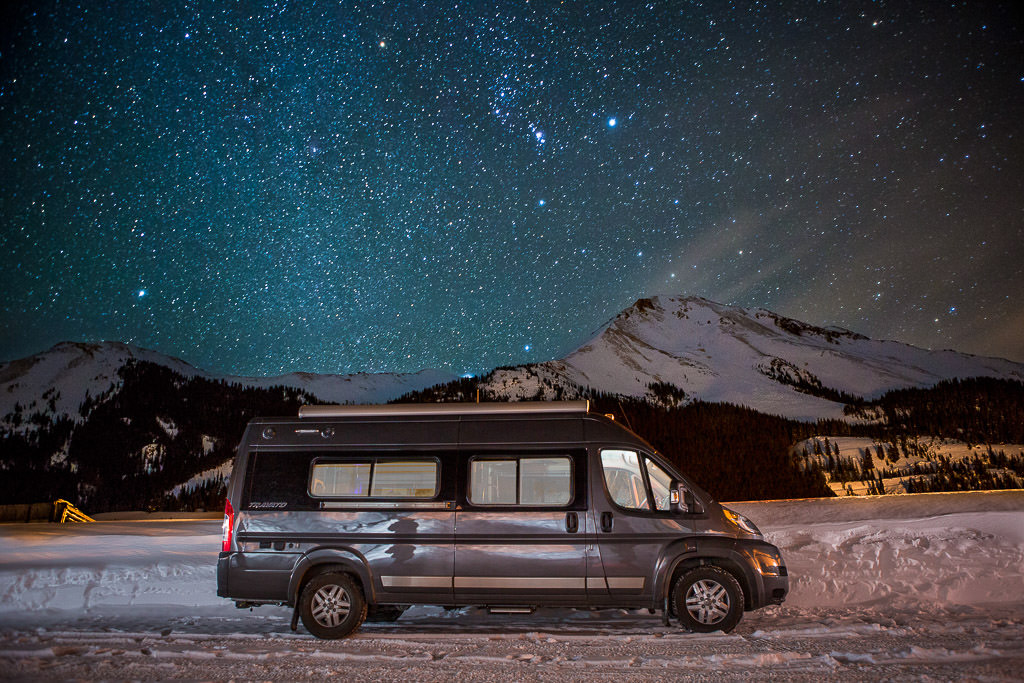
3. Driving Considerations
The first time we crossed a snow-covered pass in the Winnebago while pulling a trailer, we were pretty white-knuckled. However, with time and experience, we have discovered that it actually handles pretty well in winter conditions. The weight gives us good traction, as long as we keep it slow and steady. Make sure your tires are in good shape and pack the tire chains before you head up that mountain pass in the winter.
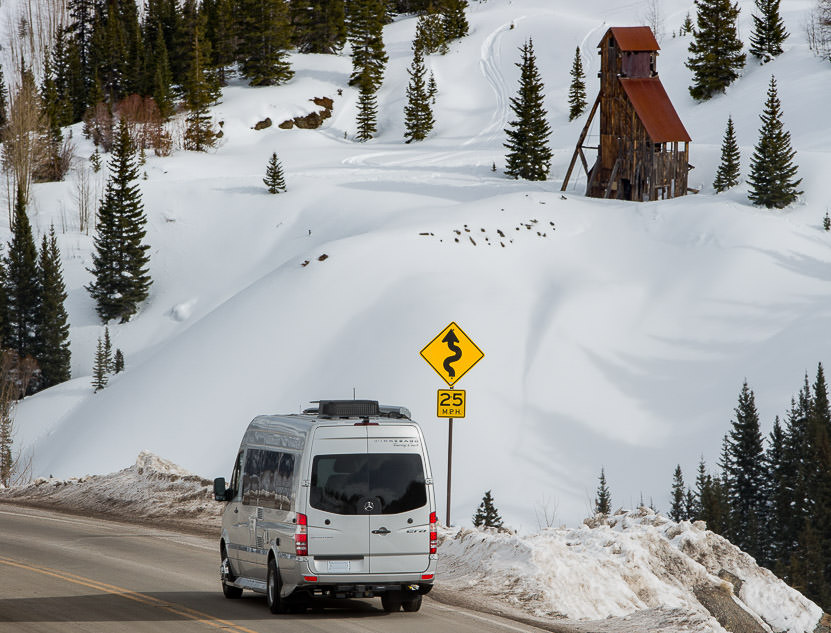
If you do find yourself in dicey conditions, remember to take it slow, and stop if necessary to wait it out. After all, the comforts of your RV are just a few steps away.
We always try to time our journey across notoriously dicey stretches of road (such as high mountain passes) to coincide with a favorable forecast. But our schedule doesn't always afford us that luxury. When we find ourselves unexpectedly in severe winter conditions, we chain up the rig and take it slow and steady (or hunker down until the road conditions improve).
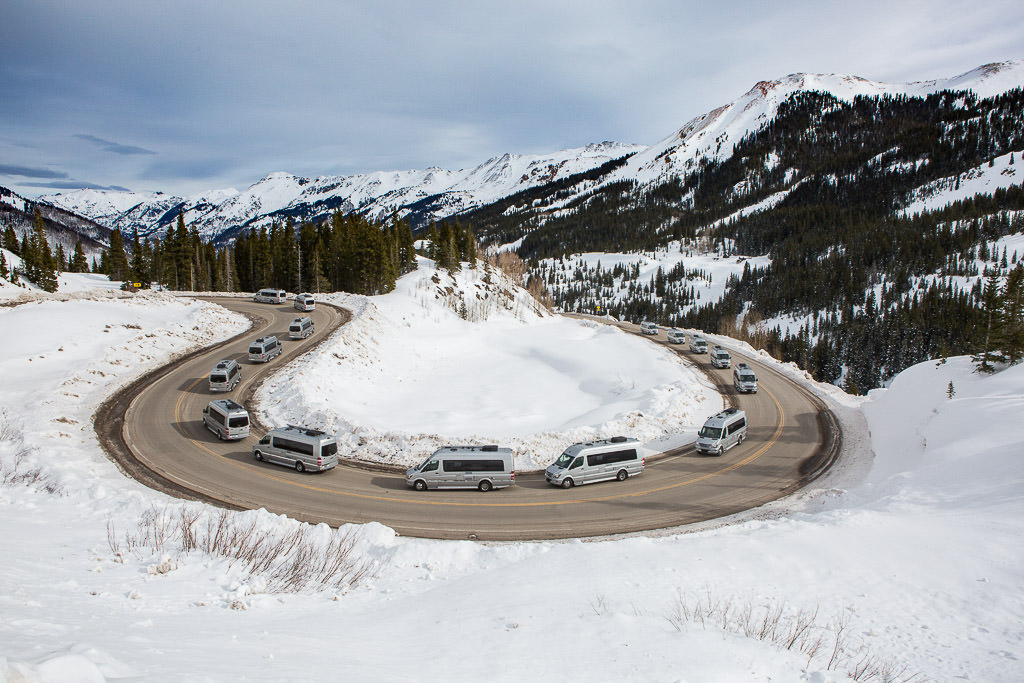
So, if you've ever dreamt of a second home in the mountains, wipe the sleep from your eyes and get your RV ready. With just a bit of planning and preparation, winter RVing is a great option for powder hounds and snow birds alike.
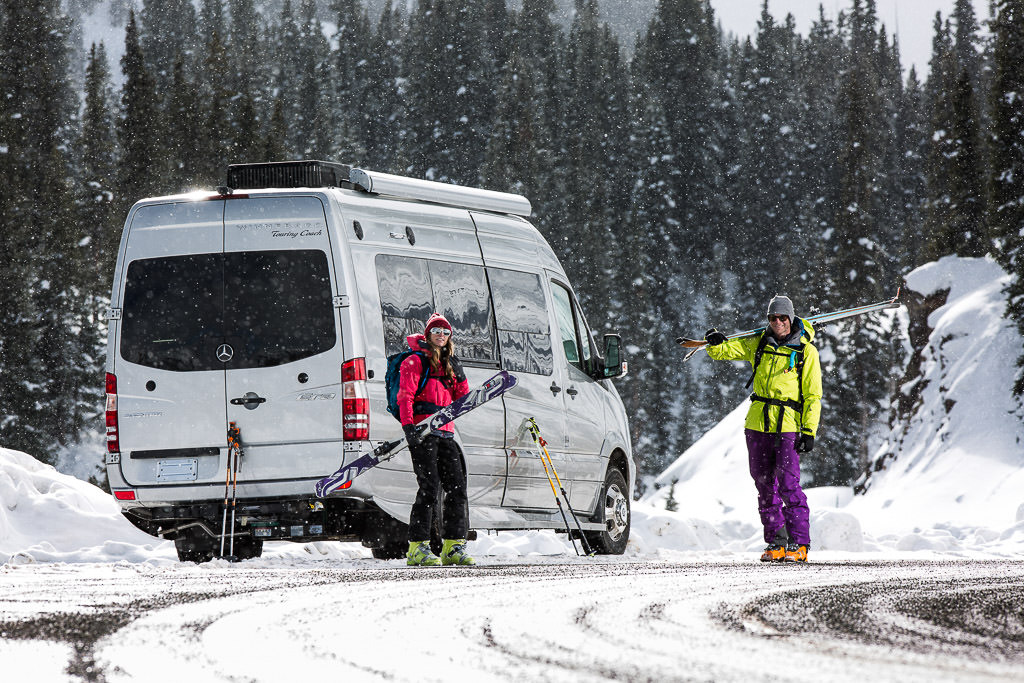
Comments
Comments on this post are moderated, so they will not appear instantly. All relevant questions and helpful notes are welcome! If you have a service inquiry or question related to your RV, please reach out to the customer care team directly using the phone numbers or contact form on this page .